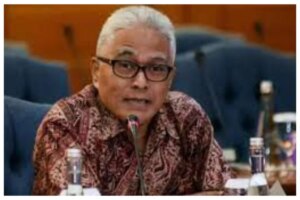The following is the profile of Muhammad Fajri, an obese man from Tangerang who died. See Muhammad Fajri’s profile

[ad_1]
BONSERNEWS.com – This is the complete profile of Muhammad Fajri who died last Thursday (22/6/20203).
Muhammad Fajri is an obese man weighing 300 kg from Tangerang City, Banten.
Muhammad Fajri died while being treated at the Cipto Mangunkusomo Hospital (RCSM), Central Jakarta.
Also Read: It is confirmed that five people died, a big explosion became the main cause of this Titan submarine that disappeared
The news of Muhammad Fajri’s departure was conveyed by the Main Director of Cipto Mangunkusomo Hospital Lies Dina Astuti on Thursday (22/6/2023).
He died on Thursday (22/06/2023) around 01.25 WIB. So, who is the figure of Fajri? Here’s the profile.
Muhammad Fajri is a man who comes from Tangerang. He died at the age of 26 years.
Also Read: Following is a History of Health Conditions and Diseases Experienced by Muhammad Fajri, an Obese Man from Tangerang
The name Muhammad Fajri suddenly became known to the public because of his condition. He is an obese man weighing up to 300 kg.
Muhammad Fajri was referred to RSCM on Friday (9/6/2023). When he was taken to the RSCM, Fajri’s condition was indeed quite severe.
Especially in the respiratory area and wounds all over Muhammad Fajri’s body due to limited space for movement due to too much weight.
“The heart is working very hard, the lungs are working very hard especially since he never moves.
“So the conditions at home or the humid environmental conditions cause problems in the lungs, as well as the skin so that the skin has many wounds, then the wounds become infected, the lungs become congested because there is an infection and so on,” said Lies.
Lies said that currently his party is still carrying out intensive examinations of Muhammad Fajri’s health condition.
Another difficulty was also experienced, namely the difficulty of the syringe to penetrate Fajri’s thick skin due to obesity.
Lies said that his party even bought a special tool that was not available at the RSCM to inject fluids into Muhammad Fajri’s body.
“Because it penetrates the muscles that are so thick to look for the blood vessels,” he said. “Then it’s too long and it turns out that it requires some special tools that we have to buy separately outside of the supplies we have for normal people,” he said.
It is known that Muhammad Fajri never moved after having an accident eight years ago.
Thus, the food intake that enters Muhammad Fajri’s body is only converted to fat.
“Because of accidents and more lying down, of course expenses will be much reduced. As a result, more (intake) will be stored as body fat which has an impact on other organs,” said the RSCM team doctor, Dicky L. Tahapary.
On a similar occasion, the nutritionist who is also the team treating Muhammad Fajri, Nurul, said that the patient’s condition was rare.
Nurul revealed that Muhammad Fajri was in a difficult condition to maintain his hunger and fullness.
“Actually, humans have a response to keep their feelings of fullness and hunger in balance,” he said.
“But it seems because this patient is also not mobile, many don’t move because of their condition.
So that more and more fat deposits or fat deposits accumulate in the body,” said Nurul.




